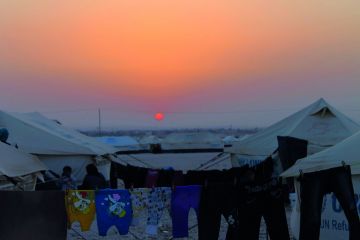
Sand mining is a worldwide environmental crisis sparked
essentially by demand in the construction industry which, in 2019, was 50
billion tonnes. It's expected to rise to 80 billion tonnes by 2060. One tonne
of concrete is 75 per cent sand. To build a house takes approximately 200
tonnes, for one km of highway, 30,000 and for a nuclear plant 12 million
tonnes. It's estimated that the world will run out of construction grade sand
by 2050.
In India it’s a massive problem wherever there’s a viable source of sand for extraction. River sand is particularly prized for its suitability for construction, so east, west north and south, riverine tracts are prime targets for the politician-police-criminal nexus. Fountain Ink’s three-part multimedia story focuses on Bihar, one of the hotspots of illegal mining with its proliferation of big rivers.
In Sone diara, at the confluence of the Sone and Ganga rivers, the story of Ram Ekbal Ram, a Dalit, makes for poignant reading. In 1975, he got a deed that gave him the right to cultivate one acre on the Sone's floodplain as long as he paid five rupees a year as rent. Today he’s effectively landless as the sand mafia has grabbed it along with a lot of other land.
In Part 1 of the series (“Mahadalits resist as sand mining mafia grabs land”) read Ram Ekbal’s story and how upper caste gangs have usurped lands of Dalits for illegal sand mining.
“For residents of Semaria [village], sand mining has ruined farmlands, caused depletion of groundwater and contributed to infrequency of floods that has resulted in lack of fertile new soil and reduced yield.”
As for the criminal aspect, the entire thing seems to be a crime, a rich field for “war” videos which routinely go viral.
“The most infamous battleground lies in the middle of Sone—Amnabad Island. Here, over three days and three nights in September 2022, a ferocious gun battle broke out between two gangs to establish supremacy over illegal sand mines. The police recovered thousands of live and empty cartridges, rifles, pistols, and automatic firearms such as AK-47s.”
In Part 2, (“The crimes of the flood plains”) read about gangs armed with assault rifles, unafraid of the police, baying for the blood of anyone in way of their criminal enterprise.
And who bears the worst part of the burden? It is women, disproportionately.
“Rampant, and often illegal, sand mining has ruined several rivers of Bihar. The miners have destroyed agricultural lands, washed away homes and killed people. While the women of Arhatpur are up against the system, mothers living on the banks of the Sone river in central Bihar mourn the loss of their young sons privately. The young men were killed while working on several legal and illegal mines operating independently of each other along the river.”
In Part 3 (“Sand mining: Women bear the many burdens”) read about the struggles of the women and their attempts to resist.
Illegal sand mining is a blight that affects every riverine tract, but Bihar is a special case, with its history of caste oppression, caste violence and the corrupt trifecta of politics, police and powerful high caste groups.






